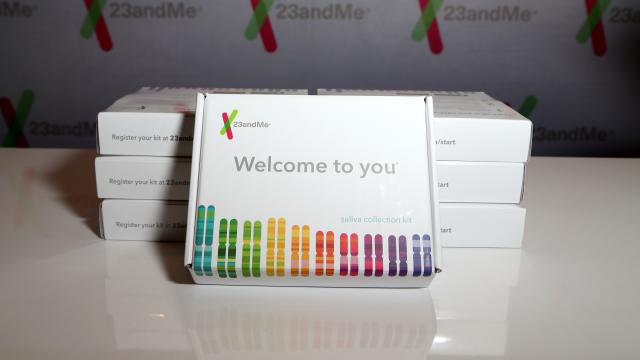23andMe has added a new option to its health-focused genetic testing array: type 2 diabetes. This week, the company announced it will begin offering customers a report meant to predict their inherent risk of developing the chronic disorder. The report was created through in-house research conducted entirely with the DNA of existing 23andMe customers — an apparent first for the company.
But while having more information about your risk of various diseases is useful in theory, it’s tough to say how much the test will really affect customers’ behaviour, given that most people already know they should eat better and exercise more, but still struggle to do so.
Diabetes is what happens when our bodies stop being able to effectively process glucose, leading to constantly high, damaging levels of blood sugar. Lifestyle factors like obesity or a diet high in processed, sugary foods are the key contributors to developing type 2 diabetes, but genetics can play a role, too. And that’s where the new 23andMe report, offered free of charge to existing customers on Monday, comes in.
“Diabetes is a significant health issue in the United States that is expected to impact nearly half of the population. When customers learn about their genetic likelihood of developing type 2 diabetes, we believe there is an opportunity to motivate them to change their lifestyle and ultimately to help them prevent the disease,” Anne Wojcicki, CEO and co-founder of 23andMe, said in a statement.
No single genetic mutation raises a person’s risk of diabetes by much. But according to the accompanying white paper, the report looks at more than a thousand genetic variations that have been linked to the condition, then generates a risk score based on how many of these variations a person has, along with factors like age or ethnicity. The model used to create this score was refined with the help of data from over 2.5 million customers who agreed to donate their DNA for research.
Customers who opt to get the report will receive one of two results. If the combined genetic risk is deemed to be lower than the risk of being overweight (probably the single largest individual risk factor for type 2), you’ll get a reading of having a “typical likelihood” for diabetes. If the risk is larger, then you’ll get an “increased likelihood” result.
Among the 2.5 million people in the 23andMe sample, 9 per cent of people with European ancestry who had an “increased” genetic risk had type 2 diabetes, compared to only 3.9 per cent of people who had a “typical” likelihood, according to the paper. It’s expected that around 22 per cent of customers will test positive for this increased risk, though the percentage may be much lower for certain populations, like those with East Asian ancestry.
The report, unlike previous 23andMe tests, will not be separately cleared by the FDA, with the company deciding to market the test under the existing umbrella of low-risk general wellness products, according to STAT.
Leaving aside lingering issues with the accuracy of DNA testing, especially for people not of European descent, it’s unclear how useful having this information handy really will be, though.
Lifestyle factors like high body mass index or age remain the most important influence on a person’s chances of developing type 2 diabetes, so many people are already at higher risk just on that basis alone.
The company acknowledges this fact, saying that customers will receive information on how these lifestyle factors, if they report having them, can affect their diabetes risk along with their genetic risk score. They’ll also get advice on how to modify their risk of diabetes by eating healthy or moving more—practical tips for anyone, regardless of their genetic predisposition for diabetes.
Being told to eat better and exercise more is not new advice, nor is it especially useful to people who are simply unable to overhaul their lifestyle due to economic or other factors. But even for those who can freely afford the $200 testing service they get from 23andMe, and who are clearly invested in their own health, it’s unclear whether yet another reminder will motivate any significant changes.
